Pelargonium sidoides
| Botanical Name | Pelargonium sidoides |
|||||||||||
| Family | Geraniaceae - The geranium family. |
|||||||||||
| Pronunciation | pe-lar-GO-nee-um sih-DOY-deez |
|||||||||||
| Common Name(s) |
English: Rabassam
Afrikaans: Rabassam; Kalwerbossie
IsiXhosa: Umsangela; Umsongelo
IsiZulu: Umckaloabo
|
|||||||||||
| Plant Group |
|
|||||||||||
| Plant Size |
|
|||||||||||
| Position |
|
|||||||||||
| General Information |
|
|||||||||||
| Specific Information | Pelargonium sidoides is in many respects very similar to Pelargonium reniforme. However the colour of the flower is so dark as to be almost black and is much smaller, and medicinal properties appear to be of greater value. It forms a low growing rosette with grey-green, crinkled leaves which have well-defined scalloped edges and is visually appealing even when not in flower. The flowers are not showy, being very small and spidery. They grow in arid to dry climates and will stand frosts, but will go dormant in very cold areas or during long periods of drought. .The roots consist of thickened, underground branch-like tubers and grow quite deep, allowing the plants to survive the frequent veld fires that occur in many areas of their habitat. |
|||||||||||
| Ad Break | ||||||||||||
| Flowers | ||||||||||||
| Description | small, delicate pelargonium flowers held in sparse clusters on long, lax stems, above the foliage, but usually somewhat drooping |
|||||||||||
| Season |
|
|||||||||||
| Colour |
|
|||||||||||
| Growth Rate |
|
|||||||||||
| Plant Uses |
|
|||||||||||
| Distribution and Habitat | from Uniondale in the Western Cape to the Eastern Cape, KwaZulu-Natal, Free State, North West and Mpumalanga, as well as Lesotho, in Albany Thicket, Fynbos, Grassland, Nama Karoo and Succulent Karoo, in short grassland, occasionally among shrubs or trees, in sand, stony soils, clay-loam, shale or basalt |
|||||||||||
| Planting Suggestions | Pelargonium sidoides prefers a full sun position in well drained soil. Avoid over-watering during summer and water only sparingly during wintertime. In areas with very cold winters they should be kept inside from late autumn to early spring to prevent them from freezing to death. |
|||||||||||
| Lorraine's Garden Notes | 2013: I have not had much luck with this species as its growth is slower than that of its hybrid sisters and it does not take to the conditions in my garden as well as it does in its natural habitat. |
|||||||||||
| Medicinal Uses | For hundreds of years Pelargonium sidoides has been used by traditional healers to cure coughs, upper respiratory tract irritations and gastrointestinal problems. It reportedly does not simply mask outward symptoms, but reduces the severity of upper respiratory irritations and supports faster recovery. The herb is used for respiratory infections like bronchitis, sinusitis, and pneumonia, tonsillitis and rhinopharyngitis, as an alternative to antibiotics, for acute and chronic ear, nose and throat infections, for rapid improvement in the symptoms associated with colds and flu and as an analgesic to reduce pain. For interesting and detailed information about its use in modern medicine, go to http://herbalafrica.co.za/HerbsPelargonium.htm |
|||||||||||
| Ad Break | ||||||||||||


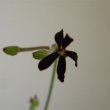
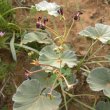
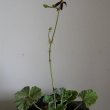
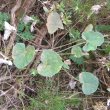
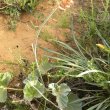
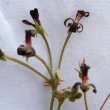


Comments
Pelargonium sidoides
Hi Lorraine, I am looking for the pelargonium sidoides plants. We have a small nursery in Johannesburg specialising in edible and medicinal plants. Please can you help me? Thanks, Yvette
Pelargonium sidoides availability
Hi Yvette
Your query reminded me that I had to update this plant, as the pictures I used previously are of a hybrid (now found at http://kumbulanursery.co.za/plants/pelargonium-sidoides-hybrid-plum-pudding).
The plant description is the same as it was, but the photos are of the original, non-hybridised plant. I am not sure, but have doubts as to whether the medicinal properties are the same.
I have emailed you in connection with your query.
Kind regards
Lorraine
History
Hello, I am currently an MBA student and I was interested in finding out more about the history of this plant. From my understanding, its medical usage was discovered by the indigenous in South Africa. I am having trouble tracking down information about said indigenous people and their use of the plant along with just some general history about them. A group in my graduate class is researching the controversies involving the patent that was obtained on this plant (in 2000). If you could help us in our research, it'd be great. Thanks!
Use of Pelargonium sidoides
Hi Cinthya
Finding specific information about precisely how and in what quantities various herbal plants are used is very difficult due to the fact that the information is closely guarded by traditional herbalists, healers and Sangomas, and is not available to those who have not been through the necessary traditional training and ceremonies. All I can tell you is that the powdered root is used in a decoction, solution or infusion, and taken internally.
The indigenous peoples who use/d this plant medicinally were the IsiXhosa, the IsiZulu and the Khoi-San. I have sifted through a number of sites and found the following that give a brief history/background of the people concerned, but of course there are many others:
http://en.wikipedia.org/wiki/Traditional_healers_of_South_Africa: Information of African tribal healers in general
http://www.museum.za.net/index.php/research/anthropology Information about the isiXhosa.
http://library.thinkquest.org/27209/Healing.htm: Information about the isiZulu.
http://www.nieu-bethesda.com/en/history/san-a-khoi.html Information about the Khoisan people
http://www.hindawi.com/journals/chem/2013/205048/ Go to plant no 8 on this page - Information about P. Sidoides
You may get some information from John Lockley, a well known Sangoma. His website is:
http://www.african-shaman.com/
I will also send your query to another source and if the gentleman has anything to add, I will email his contact details to you.
I hope this is of some help.
Kind regards
Lorraine
Nice read, I just passed this
Nice read, I just passed this onto a friend who was doing some research on that. And he actually bought me lunch as I found it for him smile Thus let me rephrase that Thanks for lunch! debgeeeedb
A Lovely Plant
I had this growing over about 3 square meters in my garden, and I didn't know what is was until I looked it up today. I live in Northern California and my Pelargonium patch took a hit last winter due ot a few days of frost, but about half of it survived and is doing nicely. I will be sure to cover it during cold spells next year because it is truly beautiful with the pale leaves and dark vibrant blossoms. Wonderful aroma too. It is doing quite well in mostly shade.
Pelargonium sidoides in California
Hi Seabee
Thanks for your comment. It is so pleasing to hear from people overseas who grow the plants I love.
It would be wise to cover the plant during the cold spells. Being half-hardy, the plant can cope with a little light frost but sustained or heavy frost, as you have found, can kill it off.
I have been told that this plant is particularly venerated by indigenous peoples not only for its medicinal properties, but also for the deep colour of the flowers. In the wild here the flower is almost black, endowing it with a kind of mystical power.
Feel free to send a picture - I'd love to see your patch.
Kind regards
Lorrainje
John
What's up it's me, I am also visiting this site daily, this website is actually pleasant and the visitors are really sharing fastidious thoughts. cbacdedddgdedgec
John
Normally I do not read post on blogs, but I wish to say that this writeup very compelled me to try and do it! Your writing style has been surprised me. Thanks, quite great article. cfekkkbdkcagkdde
John
There is visibly a bundle to realize about this. I assume you made certain nice points in features also. fefdgeddggdddkdc
John
Very interesting subject , appreciate it for posting . All human beings should try to learn before they die what they are running from, and to, and why. by James Thurber. daagkdbgegkdkadd
John
whoah this blog is excellent i really like reading your articles. Stay up the good work! You already know, many persons are looking around for this info, you could help them greatly. kfcdgdaecdbedefa
Discuss this plant
Share knowledge, ask a question or give an experience.